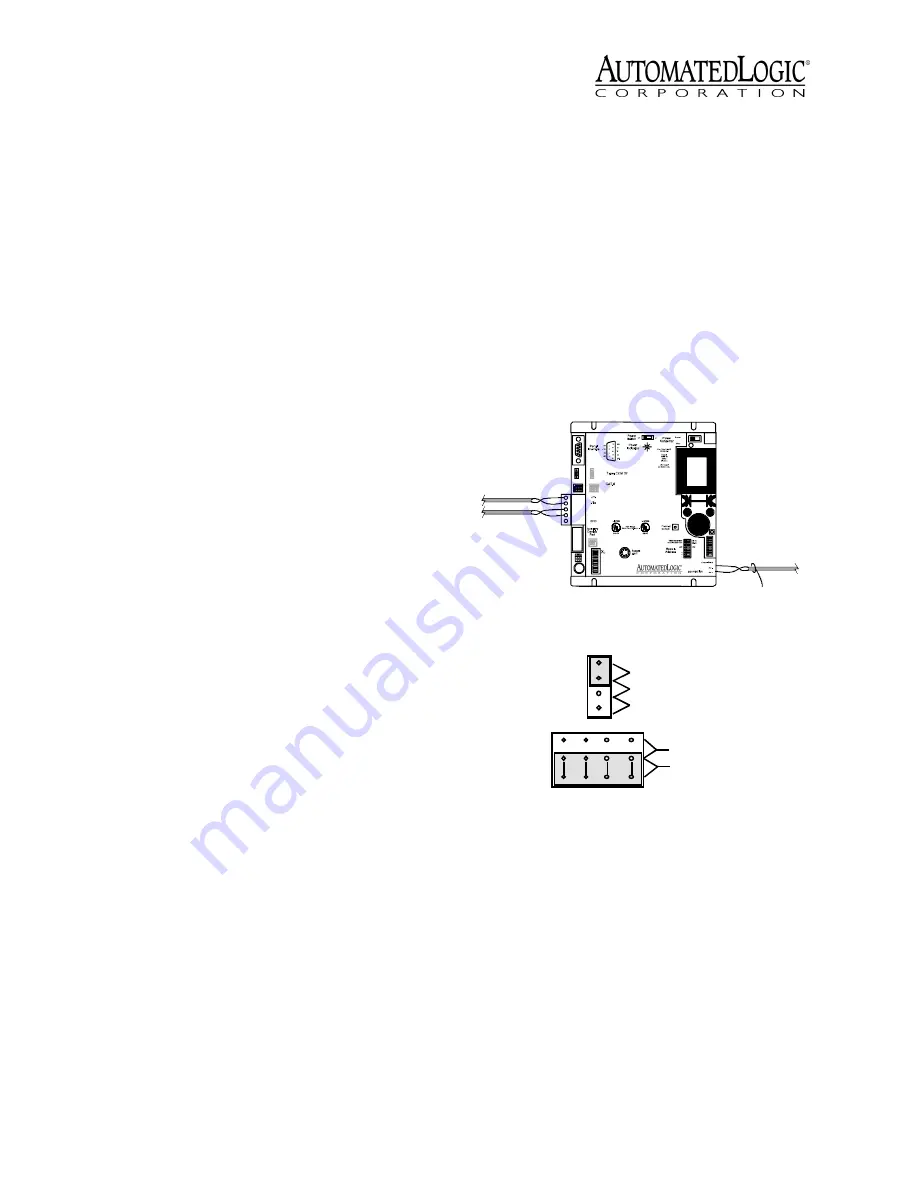
Revised 11/26/01 • UNI/32
4
© 2001 Automated Logic Corporation
When the module turns on, the Power,
Run and Error LEDs turn on and the Run
and Error LEDs begin blinking. The Error
LED then turns off. (See “LEDs” on page 9
for more information about LED signals.)
Communicating with the
UNI/32
The UNI/32 connects to the CMnet through
an EIA-485 CMnet port. A five-pin EIA-485
port provides two connections to U-cards on
the Unet. You can connect an optional
BACview
1
or BACview
2
keypad display unit to
the keypad display port (see Figure 2 on page
3).
NOTE
The EIA-232 port, labeled Diag Port
in Figure 2 on page 3, is reserved for future
diagnostic capabilities. This feature is not yet
available.
You can use WebCTRL or SuperVision to
transfer memory to the UNI/32. You can
connect a portable computer running
SuperVision to the UNI/32 using the module’s
Access port. For more information about
connecting to a workstation, refer to
“Communicating with the Workstation Using
SuperVision” on page 8.
Connecting the UNI/32 to the U-
cards
The UNI/32 supports up to 32 U-cards. The
baud rate of the Unet is set on the module
driver Properties page in WebCTRL or
Parameter page in SuperVision. Refer to the
appropriate module driver document for more
information.
Automated Logic Corporation recommends a
specific wire for both power and
communications on the Unet. This wire,
which contains a pair of 14AWG wires for
power and a pair of 22AWG wires for
communication, is available from:
Magnum Cable Corporation
Cleveland, OH 44110-0500
(800) 421-0820
Product number A3U-LINE
Note that the communication wire is
unshielded. Shielded cable is not required for
the Unet.
Use the Unet connection port to connect the
UNI/32 to the U-cards. The Unet connection
port can make two connections to the Unet,
as shown in Figure 3. Make sure the Unet
connection port configuration jumpers are set
to UNI and EIA-485 (see Figure 4).
Make sure that all U-cards and the TNPB use
the same polarity throughout the subnet. You
can verify that the UNI/32 is communicating
with the subnet by making sure the Unet
transmit and receive LEDs are active.
When adding a new U-card to an existing
subnet, you must transfer memory to the
UNI/32 before the new card is recognized.
Figure 3. Communication wiring
Figure 4. Unet configuration jumpers
NET+
NET-
UNI
NET+
NET-
ARC156
network segment
NET+
NET-
Unet 1 Connection
Unet 2 Connection
N /C
E IA-48 5
U N I
N /C
N /C




























